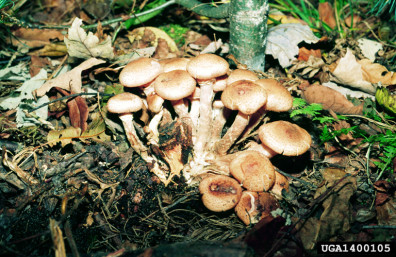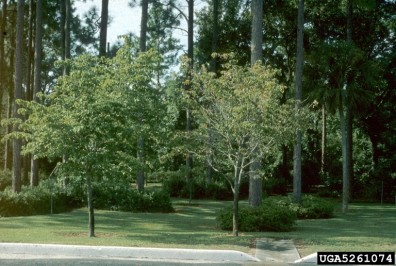Armillaria root disease
A common problem of landscape oaks and other trees in irrigated settings, Armillaria often causes a general decline, characterized by sparse, off colored foliage. Healthy appearing trees may die suddenly after foliage wilts and fades. A resinous, gummy or liquid exudate may be seen on the lower trunk of affected trees, which can be mistaken for the bleeding symptom of P. ramorum. Armillaria produces distinctive thin, white fans of fungal material that can be seen growing between bark and wood. These mycelial fans smell like common edible mushrooms. The bark nearby is often dead, loose or missing, and light brown mushrooms may appear at the tree’s base in winter. Bleeding and mycelial fans are more commonly seen on conifer hosts. Although this disease is often characterized by decline, canopy symptoms may be lacking.


